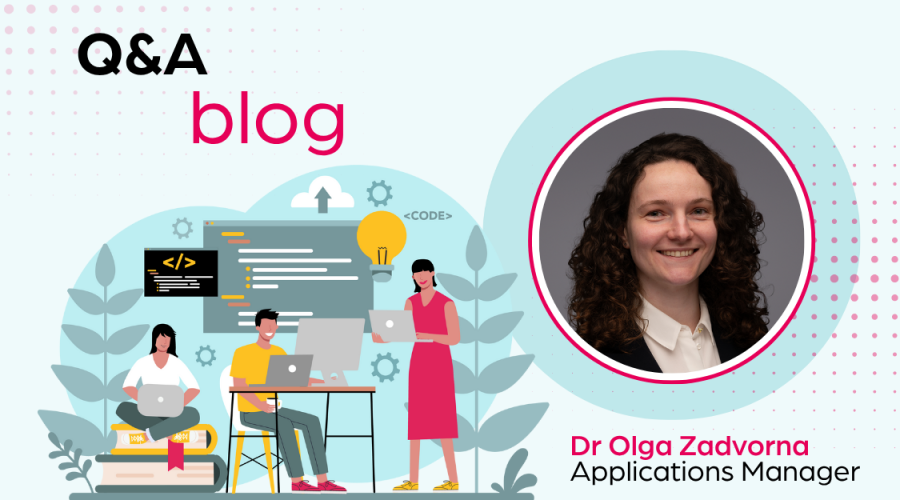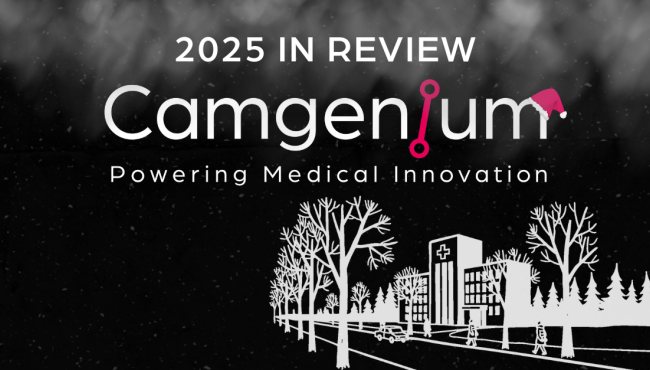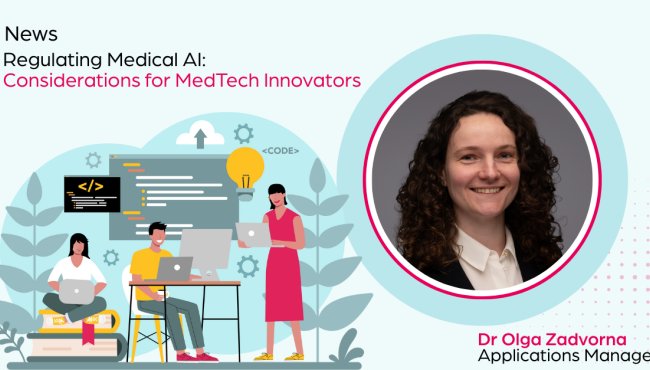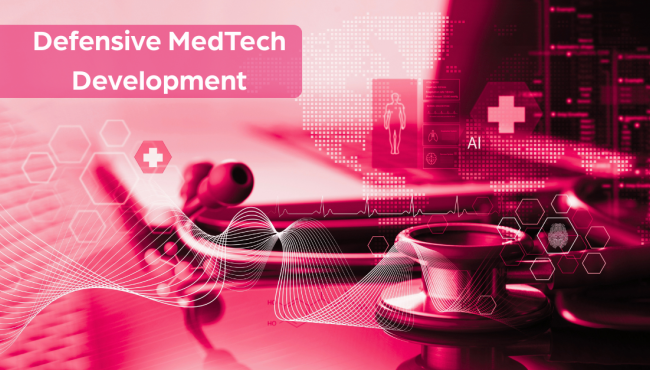Women in STEM: Olga Zadvorna’s journey from PhD to medical device development

Camgenium specialises in the development and deployment of medical devices; its expert teams of engineers turn concepts into reality. Dr Olga Zadvorna leads Camgenium’s Applications Engineering team and plays a pivotal role in creating innovative apps to medical device standards. In this Q&A blog, Olga provides insights into her career pathway, from studying at Oxford and Cambridge to leading the Application Engineering team at Camgenium. Olga shares how her academic skills and knowledge have helped her transition into medical device development.
What is your role at Camgenium?
I joined Camgenium almost five years ago to lead the product team for medical applications. Two of the three Application Engineers in my team are also women. We work with our customers and internal teams to solve complex healthcare problems and produce smart, easy-to-use digital tools that improve patient care. My role is to guide our product strategy and help grow the business.
What is your academic background?
I studied undergraduate Physics at Oxford University with my final year focus on Condensed Matter Physics and Biophysics. For my Master’s project, I explored the performance of Perovskite solar cells in challenging low temperature environments hoping to beat traditional silicon solar cell performance. It's rewarding to see how Perovskite solar cells are now becoming a commercial reality, offering cheaper green energy.
After completing my undergraduate degree, I studied for a Physics PhD in the Optoelectronics group at the Cavendish Laboratory, Cambridge University. My research was in the field of spintronics, looking to beat traditional electronic device performance. Spintronics is vital for reducing our energy use in the future as it has the potential to enable smaller, faster, and lower-power devices. My time at Cambridge taught me how to tackle problems from different angles, which I use every day in my current role at Camgenium.
When did you decide you wanted to specialise in medical device software development?
I've always been interested in medicine and even considered doing a medical degree. However, it was during the first year of my PhD that I could really see myself working in the field. Cambridge offered many opportunities, and I joined a medical iTeams project focused on commercialising a new wearable device for monitoring vitals in newborn babies. I also evaluated a digital solution for managing Lyme disease with a support community for patients. My experience working on both projects whilst studying at Cambridge confirmed that I would find a career in medical devices and applications rewarding and enjoyable.
What skills did you learn during your PhD that have helped in your current role?
Doing a PhD is akin to launching and managing your own venture - you need to identify a significant problem, devise a research plan, secure funding, manage your budget and resources, master new tools, forge collaborations, manage stakeholders, and demonstrate your findings. You're constantly managing multiple projects and wearing different hats.
These transferable skills proved invaluable when I joined Camgenium as employee number 15, tasked with establishing a new department and getting my team up to speed. I was used to setting up new systems, driving initiatives, setting goals and motivating teams to achieve them.
What is the most rewarding part of your role?
My physics background taught me to always look for the simplest most elegant solution. It is very satisfying to apply this principle to everyday challenges: How can I make a doctor’s task as simple as possible? How can we reach our goals with fewer steps? How can we use our resources most efficiently? Seeing our solutions make tangible improvements in healthcare is what I love the most.
What is the most challenging part of your role?
One of the challenges in every project is making sure we build the right thing. At Camgenium, our engineering team is excellent at building devices to the highest safety standards, once requirements are defined. Figuring out those requirements – the product specification – is often challenging, especially with a diverse range of stakeholders. My job is to define the specifications and achieve Product-Market fit for everything we do. I need to ensure our products and features are valuable to our customers, represent a viable business opportunity, and are technically feasible to build. There is often limited information about customer value, and this is especially tricky in medicine due to patient data confidentiality and varying medical opinions.
For example, when developing a mobile app that alerts doctors, classed as a medical device, we follow the ISO 13485 standard. The standard requires us to have a risk management system in place. As part of that process, we assess potential failure scenarios. In this case, we would identify the risk of the phone losing power or signal and add additional requirements to mitigate the risk. We then iterate on these requirements to ensure they are effective and meet the needs of all stakeholders.
What innovative medical device applications have you been working on at Camgenium?
I joined Camgenium in 2020 when the NHS was under huge pressure from COVID-19, leading to massive surgery waiting lists. One of our partners, C2-Ai, already had a model that could look back at hospital performance retrospectively by checking a patient's risk when they came in and comparing it to their outcome after surgery.
C2-Ai asked us if we could create a tool for hospitals to assess patient risk before surgery, running their model in real-time. Using our Camgenium platform and with help from our engineers, I quickly put together the application that same week. It was deployed to hospitals right away and is still being used today. The application helps hospitals identify the highest-risk patients so that the hospitals can take appropriate action, such as providing extra care before the surgery or changing how the surgery is done. The innovative application has demonstrated great results in reducing complications and unplanned hospital stays and our engineers regularly deploy it to new hospitals. I remain involved in the work of updating the model to ensure that it stays up to date with medical practice and uses state-of-the-art data science techniques.
What advice would you give to anyone interested in a career in medical device development?
Be prepared for a long but incredibly rewarding journey! Medical device development often takes many years because of strict safety and regulatory rules. We're lucky at Camgenium because we specialise in rapid medical device development. We have a platform with pre-built components, an electronic Quality Management System that simplifies the regulatory process, and a team eager to get innovative technologies to patients faster. Medical device development is an area where you can truly make a difference.
Summary
It’s clear from Olga’s insights that many transferable skills come from a PhD that can be used in the workplace. In Olga’s case it has helped to create the foundations for her career and has built the skillset for her role at Camgenium, developing new medical devices. At Camgenium, we celebrate all our incredible engineers and want to encourage everyone to choose a rewarding career in STEM.


